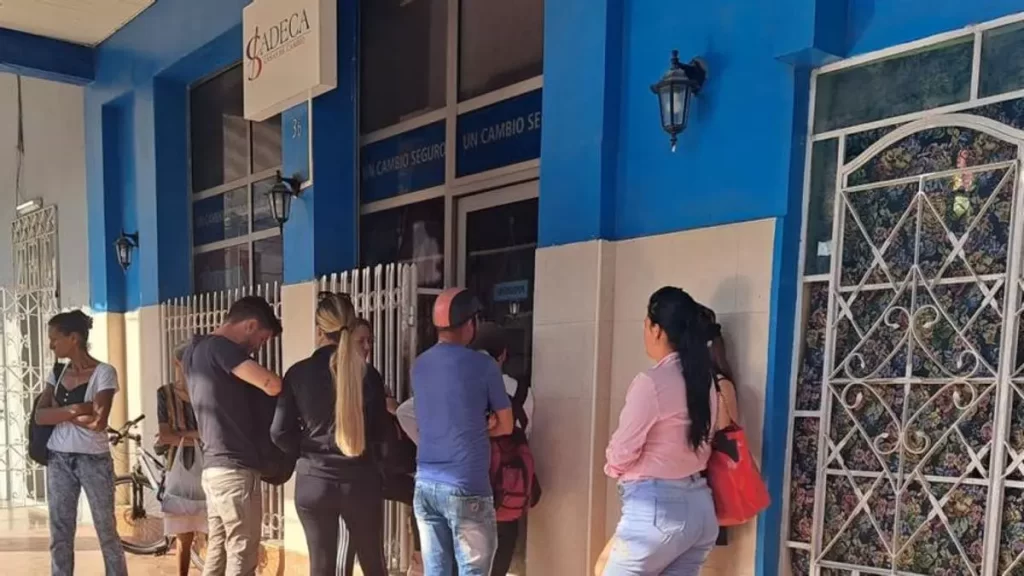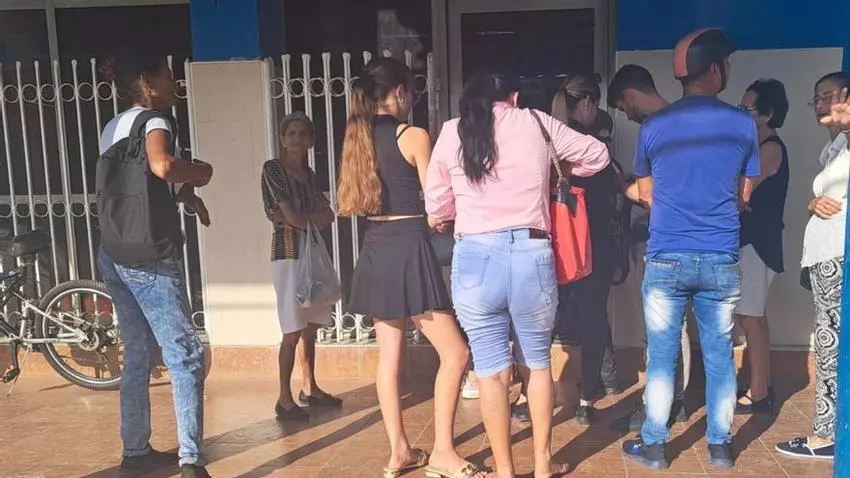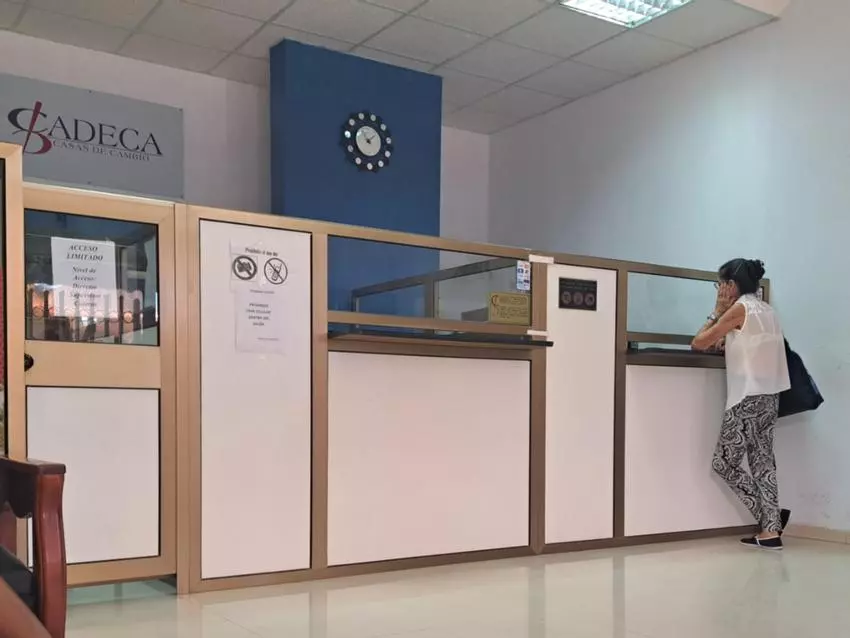The “virtual line” was more scary than the real ones: 7,362 people were waiting for a turn to buy the 100 dollars allowed by the authorities

![]() 14ymedio, Yankiel Gutiérrez Faife, Camajuaní (Villa Clara), 26 May 2024 — Painted bright blue and with a white grill, the Camajuaní Cadeca (Currency Exchange) is one of the high points of the “boulevard,” the two blocks where almost all the town’s commerce takes place. With only two counter positions and a small office, the dollars that those waiting in line on the side of the building so desperately desire come out of their vault – in dribs and drabs.
14ymedio, Yankiel Gutiérrez Faife, Camajuaní (Villa Clara), 26 May 2024 — Painted bright blue and with a white grill, the Camajuaní Cadeca (Currency Exchange) is one of the high points of the “boulevard,” the two blocks where almost all the town’s commerce takes place. With only two counter positions and a small office, the dollars that those waiting in line on the side of the building so desperately desire come out of their vault – in dribs and drabs.
Nine months ago, in July 2023, Osmany, 24, and five other family members signed up on the Cadeca waiting list organized by the official Ticket application. The “virtual line” was more frightening than the real ones: 7,362 people were waiting for a turn to buy the 100 dollars allowed by the authorities.
“My intention was to use these dollars on a shopping trip to Caracas, but the wait lasted longer than expected and I decided to make my trip earlier, in February of this year,” Osmany tells 14ymedio. He adds that only upon returning from Venezuela did he receive the news that he had been “lucky” to get one of the 25 daily ‘turns’ for the Cadeca.

To get to the Cadeca he had to cancel a trip to Havana. Nothing could come between him and the “opportunity,” he says. After juggling – and passing through the Ticket line again, but this time for a bus ticket – he was able to reorganize his agenda, get up early and go to the “boulevard.”
On May 16, at 8:00 in the morning, around thirty people were already loitering around the Cadeca. At first glance one could distinguish those who came to solve a specific problem and those who were lining up for business. In a small town like Camajuaní, where everyone knows each other, it is already well defined who each neighborhood’s ‘colero’ — that is the ’professional place-in-line holder’ — who goes to the “boulevard” with the same punctuality as the state workers.
Osmany found “elders waiting to cash their squalid check; people waiting to deposit and withdraw cash from their magnetic cards” and young people like him, eager to “get the dollars.”
The space at the Cadeca was minimal. A couple of seats, the counter positions, a clock and a sign with a warning: “it is prohibited to use cell phones inside the room.” “Only one counter position served those present and my number was 32,” recalls Osmany.
At eleven in the morning the inevitable happened. A blackout in Santa Clara affected the transaction system and paralyzed the connection. With a grim face, the cashier explained the situation to the members of the line.
After a few moments that Osmany describes as “of confusion and chaos” – as people began to get nervous – the clients began to be served one by one, much more calmly. Finally it was his turn. “I received 50 dollars in cash and another 50 in freely convertible currency, MLC. For this I paid 12,360 Cuban pesos,” he calculates, relieved.

Located between Caibarién and Santa Clara – the two points marking the tourism center of in Villa Clara – Camajuaní has always benefited from that intermediate position. In the town, known for being the mecca of footwear on the Island and for the mansions that the shoemakers have built, the dollar is not lacking. It is also a fixed point of Cuban President Miguel Díaz-Canel’s visits to Villa Clara. There he has, as in neighboring Placetas, family and businesspeople who are related to him.
The possibility of traveling to Venezuela or other nearby countries to buy clothes and other products to resell on the Island is a growing business among Camajuaní residents. Last month 14ymedio reported on the story of María, a 42-year-old mule who maintains a store on the “boulevard” – bringing clothes, shoes and perfumes to Cuba and carrying rum, tobacco and wines to other destinations.
After going once to Guyana, twice to Russia, three times to Peru and twice to Colombia, this year she left, like Osmany, for Venezuela. After the trip, they both came to the same conclusion: the dollar, that poderoso caballero — powerful gentleman — is the language that is best understood on the streets of Camajuaní as well as Caracas.
____________
COLLABORATE WITH OUR WORK: The 14ymedio team is committed to practicing serious journalism that reflects Cuba’s reality in all its depth. Thank you for joining us on this long journey. We invite you to continue supporting us by becoming a member of 14ymedio now. Together we can continue transforming journalism in Cuba.
